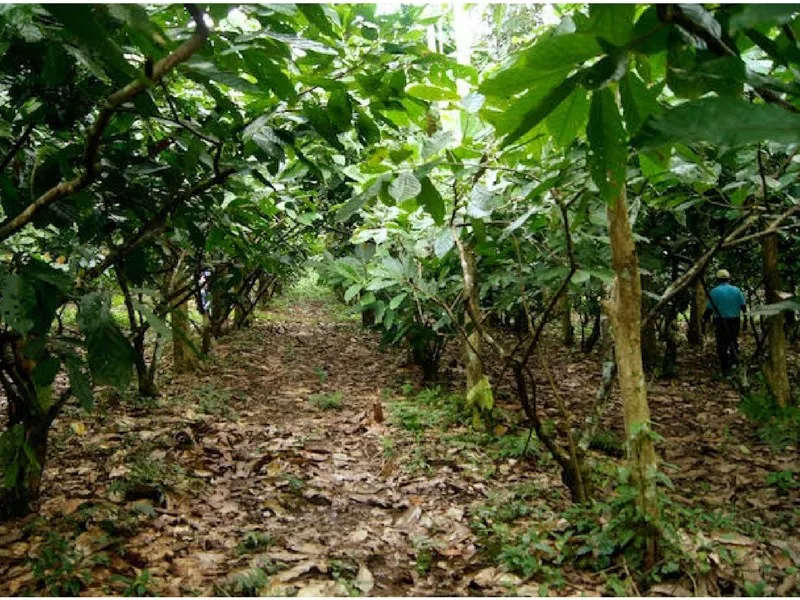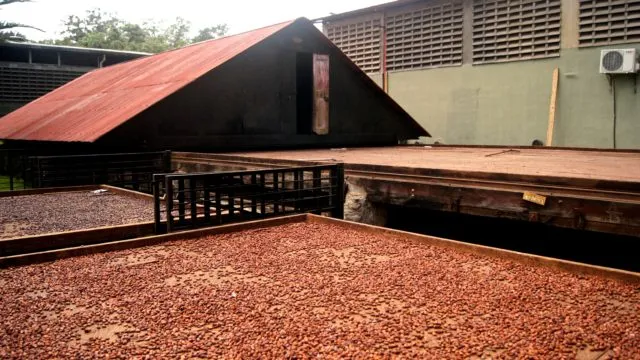However today cocoa took a gigantic boom and increased the crops and their production.
Cocoa (theobroma cacao, meaning "food of the gods") originated in Venezuela comes from the Creole type tree, has excellent aromatic qualities recognized in the world. However, it is very sensitive to pests and diseases, its yield per hectare being lower than that of other types.

Every day, more cocoa derivatives come from the own artisan and semi-artisan farms. Have you seen them in the markets? These producers are improving their agricultural processes and learning to process their cocoa with quality. In addition, a phase of social revaluation of work has begun in the cocoa farms that today are part of tourist routes and promotion of the intercultural heritage.
The chocolate in addition to having a pleasant texture and flavor in particular the dark has a high nutritional alorenergetico because it contains minerals and antioxidants that help control cholesterol.
About 80% of the cocoa produced in the country comes from the Miranda and Sucre states. In this case I will refer to the cocoa that is produced in Sucre State...
Since I have the opportunity to live in the Sucre State, specifically in the Benitez Municipality, where one of the most productive haciendas of this almond is located "the hacienda San José" inspired me to show part of this wonderful item that nature has given us


In this cocoa area there is an exception to this profile: Hacienda San José. Located about 150 kilometers from Cumaná in the town of El Pilar, Benítez municipality of Sucre state, it shows "the other side of the coin". Of course, in this case, that coin has a cocoa flavor and aroma.
Owned by the Franceschi family, of Corsican origin (from the French island of Corsica) since 1830 they are responsible for the production of Cacao San José. Today it is a large hacienda of 170 hectares that has managed to develop, mainly through the technique of grafting, a high quality cocoa that is directed in particular to international markets.

But it was not always like this. A few years ago the Franceschi brothers had the dilemma of selling or rebuilding the property and betting on the latter. This is how they began a period of resurgence and undertook an intense search throughout the country to find the best cocoas.
Little by little this arduous effort was, literally, paying off. Today, the property has eight types of cocoa: the Ocumare 61, Ocumare 67, Ocumare 77, Chuao, Guasare, Porcelain, Canoabo and the Caribbean River.
These varieties are distributed in 16 plots, all treated under a careful management that later allows a better grain quality.
More graft, better cocoa
Explain that each plot works with a specific variety. "The most important thing is to ensure that the selection of mother plants is the most appropriate for this clone to have the genotypic characteristics of that variety, so we know that the grain will have quality and purity levels of each type of cocoa."
Although each area of the cocoa production process is important, fermentation stands out as a key step to enhance the flavor and aroma of the grain. "Each variety has specific days. For Creole cocoas, there is a tendency to give between 3 or 4, while Trinitarios between 6 or 7, that improves the characteristics of the grain as such for the chocolate production ".
Cacao San José is also the raw material for the exquisite Franceschi Chocolates, recognized on several occasions with various international awards, including the International Chocolate Awards in New York, which awards the best chocolates in the world
Model to copy
To meet international clients, those in charge of Hacienda San José sometimes seek the support of small producers in the area. Some of them even bring cocoa to the hacienda; However, they have tried to go further trying to bring technology to them "we want to plant that seed so they can see that they can add value to their product and change that culture of collectors for one in which they are truly producers, to ensure that your cocoa is better "

This intention, he says, has been embodied in an initiative called Emprencacao, through which it is sought that farmers in the area gradually improve their levels of productivity.
"There is included the fermentation, disease control, cleaning, fertilization, pruning and all the agronomic work that can be done to the plants and that allow a better performance of the plot. In the area that is another weakness, what they do to the bushes is just a cleaning, with this project we are trying to replicate on a small scale, this process that we do, "explains the also senior technician in farm management.
The growth of the hacienda is remarkable. They currently have a large drying patio in which the times are zealously watched, according to the type of cocoa; in addition to 84 boxes of fermentation of one cubic meter on average, an amount not common and well above other farms producing cocoa in the country.

Although the main market of Hacienda San José is outside the country, certain problems with export permits make this objective difficult, so that in some cases the grain is also used by companies such as Kko Real, Aprocao and Nestlé.
San Jose Training, Valrhona, Itochu, Belkin or Willie's Chocolates are among the international companies that demand the San José Cacao for different uses and especially the elaboration of fine and extra-fine chocolates, recognized worldwide.
One of the best chocolates in the world is made at the hacienda "san josé". Benitez municipality. State sucre- Venezuela.



